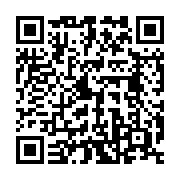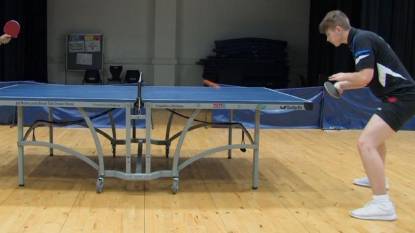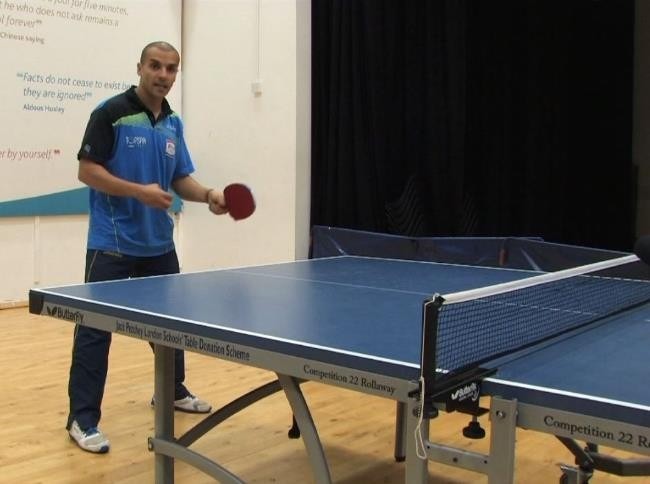The Forehand Drive: A Video & Guide to Mastering the Table Tennis Shot
By: Mark
November 27, 2015 | Updated: October 22, 2025
Welcome to Part 2 in our Best Table Tennis Tables pro coaching video series with Eli Baraty from the Harefield Academy in the UK. This time Eli covers one of the basic shots, the forehand drive. Our video tutorial series will help you beat your opponents regularly in no time!
Part 1 in our series of Pro Ping Pong Coaching Videos is How To Do A Backspin Serve in Table Tennis, I hope that you learnt something useful from that tutorial last week.
This time we are covering another useful technique which is especially useful for outdoor games because the spin provides the ball with momentum which can help if there is a breeze.
There are a few basic strokes in table tennis that you will need to master and the forehand drive is one of the most important as it forms the basis of many more complicated shots, it is well worth practicing until you master it. This video will help you develop your ping pong skills and learn how to execute this technique like a pro.
What Is The Forehand Drive For?
This is an attacking table tennis stroke, usually applied with a little topspin. You can use this stroke to return medium length or float shots. It will not work if played against either a backspin shot or a short ball. Returning medium balls is the best use for this drive shot and after practicing for a while, you will learn when best to use this drive in your own game.
It is one of the most important shots in table tennis. It is a powerful attacking stroke that requires skill, technique, and practice to master. In this article, we will provide a comprehensive guide on how to execute a perfect forehand drive. We will cover grip, stance, backswing, contact point, and follow-through, as well as common mistakes to avoid.
Table Tennis Grip
The grip is the foundation of any table tennis shot, and the forehand drive is no exception. The most common grips in table tennis are the shakehand grip and the penhold grip. The shakehand grip is the most popular grip in table tennis and is used by most players. It involves holding the racket with your thumb and index finger on one side of the handle and the other three fingers on the opposite side. The penhold grip, on the other hand, involves holding the racket with your thumb and index finger on one side of the handle and your other fingers on the blade. The penhold grip provides a more compact stroke, but it can be more difficult to generate power.
Stance
The stance is critical for executing a successful forehand drive. You should stand with your feet shoulder-width apart and your weight evenly distributed between your legs. Your knees should be slightly bent, and your body should be relaxed. This will give you the stability and flexibility you need to move quickly and generate power.
Backswing
The backswing is the motion of bringing your racket back in preparation for the shot. It should be smooth and fluid, with your arm and racket moving together in a circular motion. The backswing should begin as soon as you recognize the incoming ball and should be completed by the time the ball reaches the top of the bounce.
Contact Point
The contact point is where the racket makes contact with the ball. For a forehand drive, the contact point should be in front of your body, slightly above the height of the net. As you make contact with the ball, your racket should be slightly closed, generating topspin and driving the ball forward with power and accuracy.
Follow-through
The follow-through is the motion of continuing the racket's movement after making contact with the ball. It should be smooth and natural, with your arm extending forward and upward. A good follow-through helps to generate power and spin and helps to maintain control and accuracy.
Drills
Practicing forehand drives is essential for improving your skills and developing muscle memory. One effective drill is to have a partner feed you balls from various locations on the table, and you practice returning them with forehand drives. Another drill is to practice shadow strokes, where you practice your form and technique without a ball. Regular practice will help you improve your footwork, timing, and consistency, making you a better player.
Common Mistakes
There are several common mistakes that players make when executing a forehand drive. Poor footwork can make it difficult to generate power and accuracy, and overthinking can lead to hesitation and a loss of control. Tensing up or stiffening your body can also make it difficult to generate power and accuracy, and failing to follow through properly can lead to a loss of control and accuracy.
In conclusion, mastering the forehand drive is essential for success in table tennis. By focusing on grip, stance, backswing, contact point, and follow-through, you can deliver powerful and accurate forehand drives that will leave your opponents scrambling to keep up. Regular practice and drills are essential for improving your skills, and avoiding common mistakes
Advanced Techniques
Once you have mastered the basic technique of the forehand drive, it's time to take your skills to the next level with more advanced techniques. One such technique is the loop, which involves lifting the ball with topspin and placing it deep on the opponent's side of the table. This technique requires a more advanced level of footwork, timing, and accuracy than the basic forehand drive, but it can also generate more power and spin.
Another advanced technique is the drive, which involves hitting the ball with more speed and power than the basic forehand drive. The drive requires a faster swing and a more aggressive follow-through than the forehand drive, but it can also be used to put your opponent under pressure and win points quickly.
Finally, the smash is the most advanced technique of the forehand drive. It involves hitting the ball with maximum power and speed, often from above the level of the table. The smash is an offensive shot that requires precise timing and a strong wrist snap, and it can be used to put your opponent on the defensive and end points quickly.
Variations of the Forehand Drive
In addition to the basic drive and advanced techniques, there are several variations that can be employed depending on the situation. One such variation is the flick, which is a quick and sudden shot that is used to return short balls. The flick requires a quick wrist snap and a short backswing, and it can be used to surprise your opponent and win points.
Another variation is the counter, which is used to return your opponent's drive with a quick and aggressive shot. The counter requires good timing and footwork, as well as a quick and precise swing. It can be used to take control of the point and put your opponent on the defensive.
Finally, the block is a defensive variation of the drive that is used to return your opponent's shots with minimal movement. The block requires good hand-eye coordination and a steady wrist, and it can be used to disrupt your opponent's rhythm and force them to make mistakes.
Strategies
In addition to technique, strategy is also important when it comes to executing a successful forehand drive. Understanding the strengths and weaknesses of your opponents, as well as the spin and speed of their shots, can help you anticipate and execute effective forehand drives.
One strategy is to use your forehand drive to target your opponent's weaker side. For example, if your opponent has a weaker backhand, you can use your forehand drive to hit more balls to their backhand side and force them to make errors.
Another strategy is to use it to counter your opponent's spin. If your opponent is using a lot of topspin on their shots, you can use your it to counter that spin and return the ball with backspin or sidespin.
Equipment
Finally, equipment can also play a role in the effectiveness of a forehand drive. Choosing the right racket, rubbers, and ball can help a player generate more power, spin, and control in their forehand drives.
One important factor to consider is the type of rubber on your racket. Some rubbers are better suited for generating spin, while others are better for generating speed and power. Choosing the right rubber can help you get the most out of your forehand drive.
Another important factor is the type of ball that you use. Some balls are better suited for indoor play, while others are better for outdoor play. Choosing the right ball can help you get the most out of your forehand drive, especially if you are playing in different environments.
In conclusion
The forehand drive is a fundamental technique in table tennis that can be improved with practice and technique. By incorporating advanced techniques, variations, strategies, and equipment into your game. It is important to swing your body from the waist and hips and place your feet in the direction of travel of the ball. As always with Ping Pong, timing is everything. When you practice this drive shot it is worth keeping consistent timing to help you improve.
This shot is so important in table tennis that the ITTF have done scientific studies to analyze it's bio-mechanics. The better the ITTF understand what it is about in terms of bio-mechanics, the better the game of Ping Pong can become overall.
Video Transcription
The Forehand Drive In Table Tennis
You want to start from the legs, you want to have half a foot slightly across to shoulder length apart.
The stroke then gives you the ability to turn your waste, and you have your legs like that and this is how it looks like. (Eli twists his body).
I've give you a little demonstration.
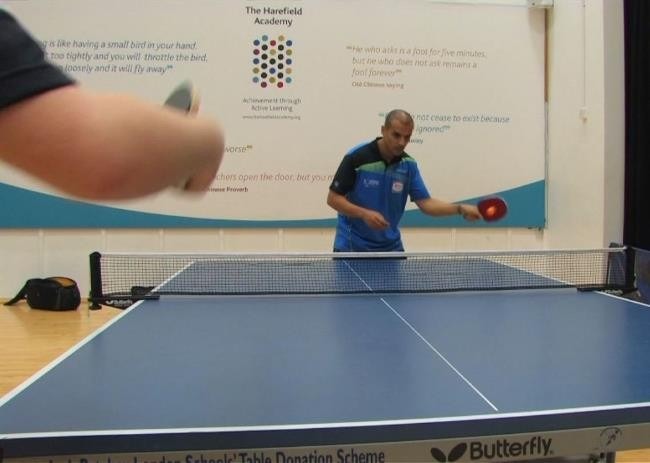
You will notice my body twists a little bit, this shoulder over here pointing in the direction on where I am going.
My timing tries to stay the same.
So you want to try and time the ball at the top of the bounce when you contact it.
Also the angle of the bat is very important, if it's too closed it will go in the net, if it's too open it will go off the end so try and find the right angle.
In general it's a 45 Degree angle.
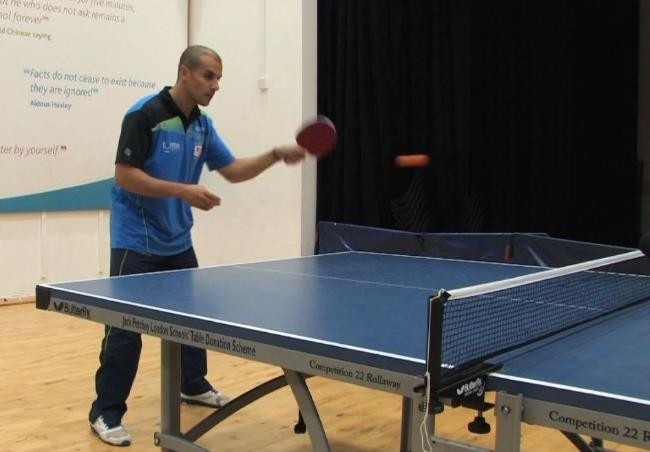
Credits
The Forehand Drive Pro Coaching Video features Eli Baraty of The Harefield Academy. Thank you, Eli for taking the time to share your expert knowledge. The video was produced and edited by our very own Editor, Mark Kemp. Mark has been producing professional video for a number of years and it's great to see him combine his two passions (Video Production and Table Tennis) for The Best Table Tennis Tables
Forehand Drive In Table Tennis Coaching Video
Featured Articles
Dive into in-depth stories, exclusive interviews, and expert advice from the world of table tennis. Discover strategies, player spotlights, and behind-the-scenes insights.

Ping Pong Revolution: How Table Tennis Transforms Homes, Offices, and Communities
Table tennis is uniquely positioned as one of the most versatile recreational activities available today. This comprehensive article explores the transformative impact of ping pong across three …
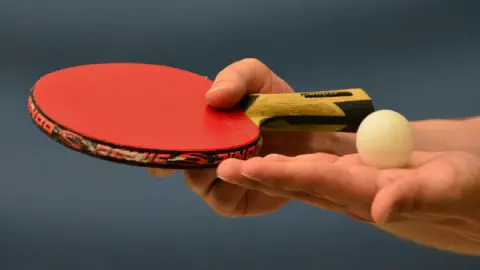
Basic Equipment Needed to Play Table Tennis
What is the basic equipment that you need to get started with playing ping pong? Our guide to the very basic table tennis equipment required to go ahead and start to play. A guide to the basics of …
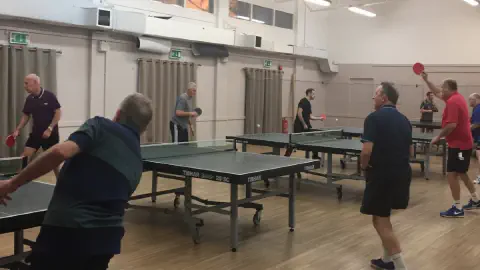
Is Ping Pong Good Exercise? The Top Health Benefits Explained
Table tennis is great exercise both for mind and body. You can use ping pong to keep fit alongside other exercise programs and raise your overall activity levels to lose weight and keep your mind …

Ping Pong Revolution: How Table Tennis Transforms Homes, Offices, and Communities
Table tennis is uniquely positioned as one of the most versatile recreational activities …

Basic Equipment Needed to Play Table Tennis
What is the basic equipment that you need to get started with playing ping pong? Our guide …

Is Ping Pong Good Exercise? The Top Health Benefits Explained
Table tennis is great exercise both for mind and body. You can use ping pong to keep fit …
